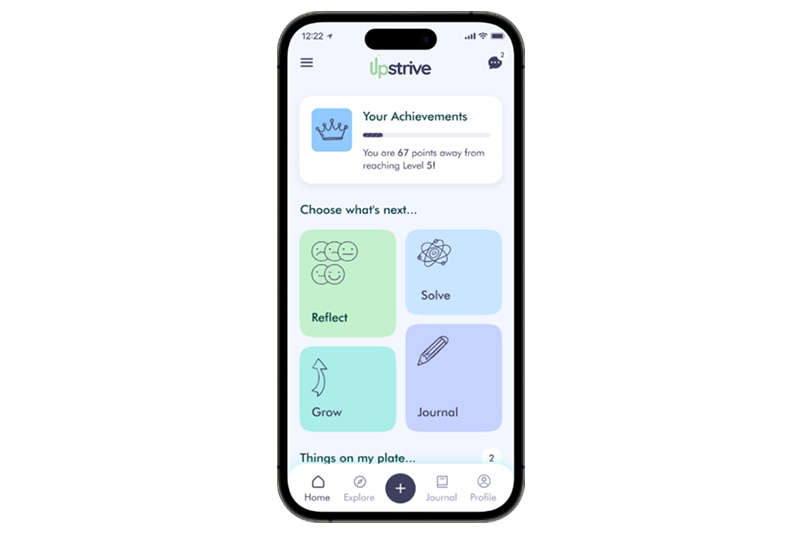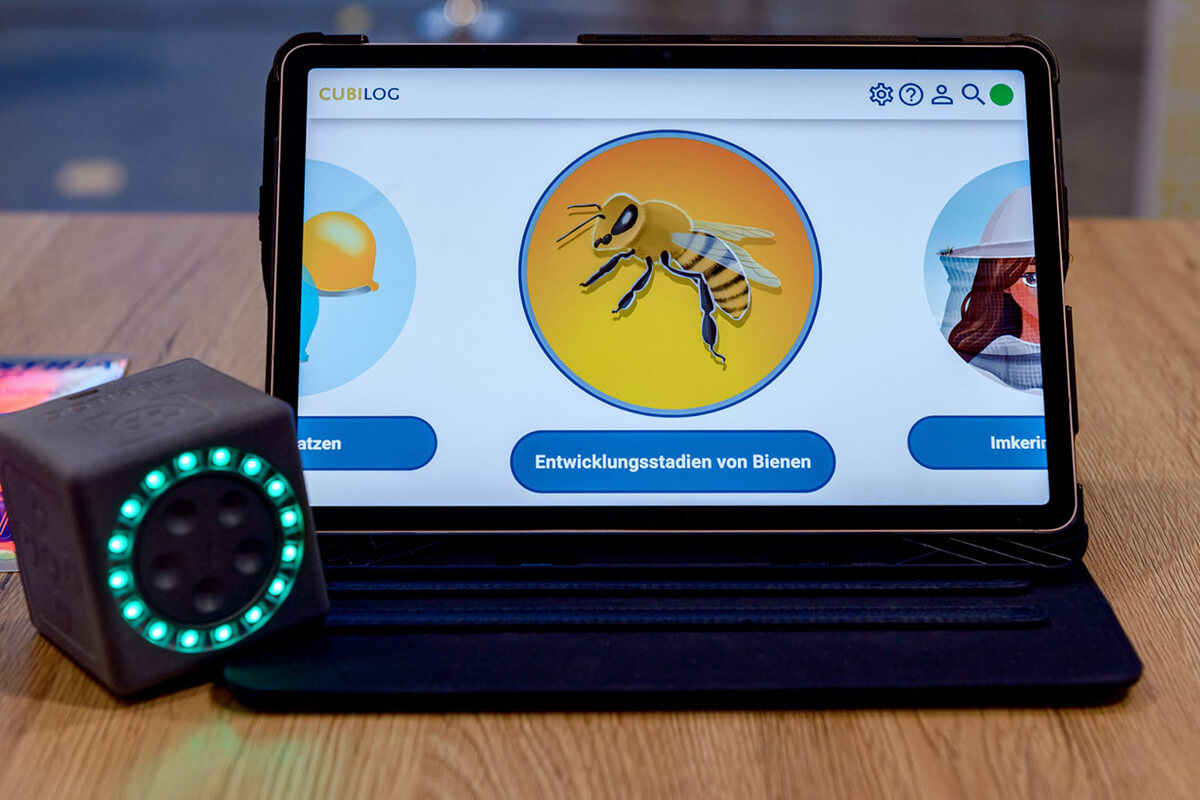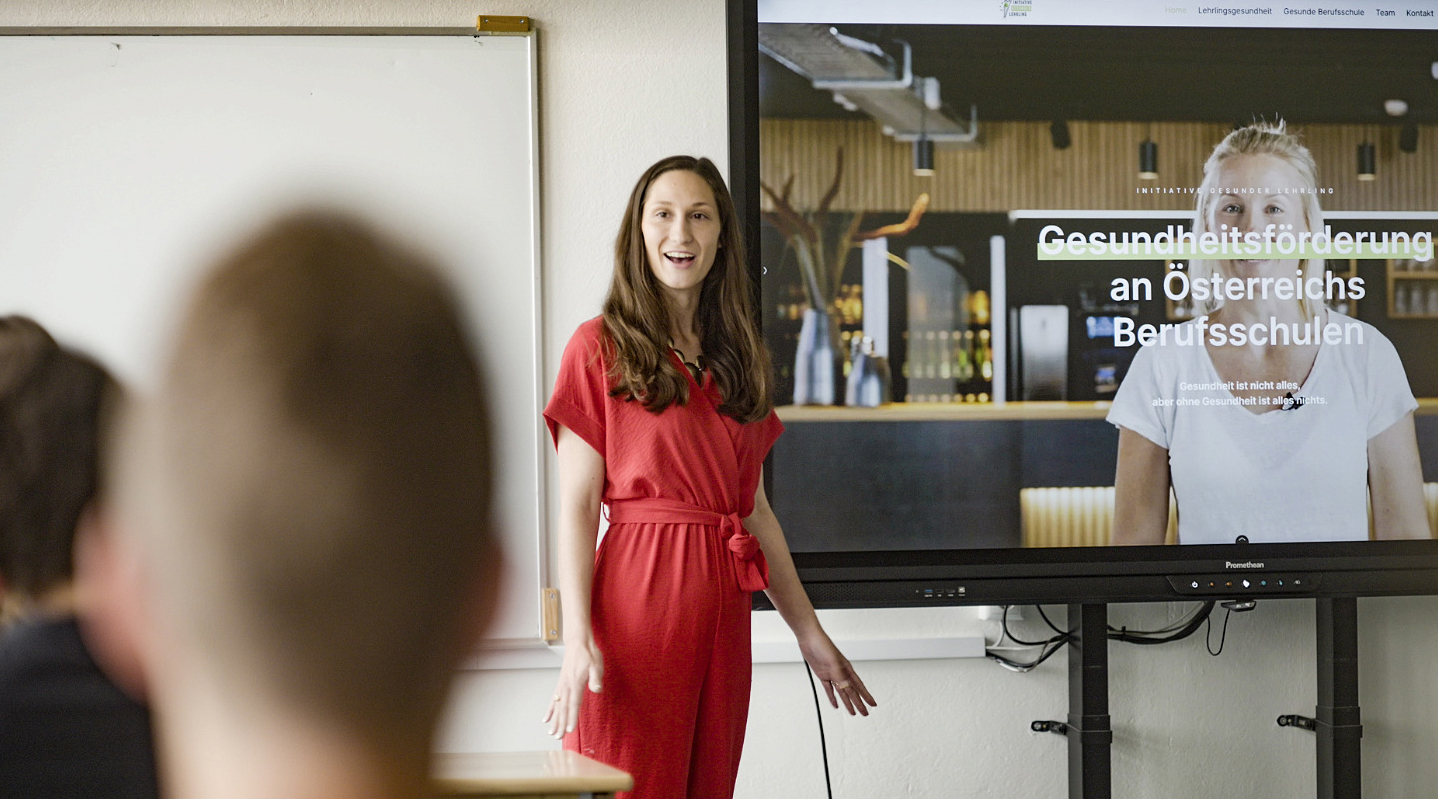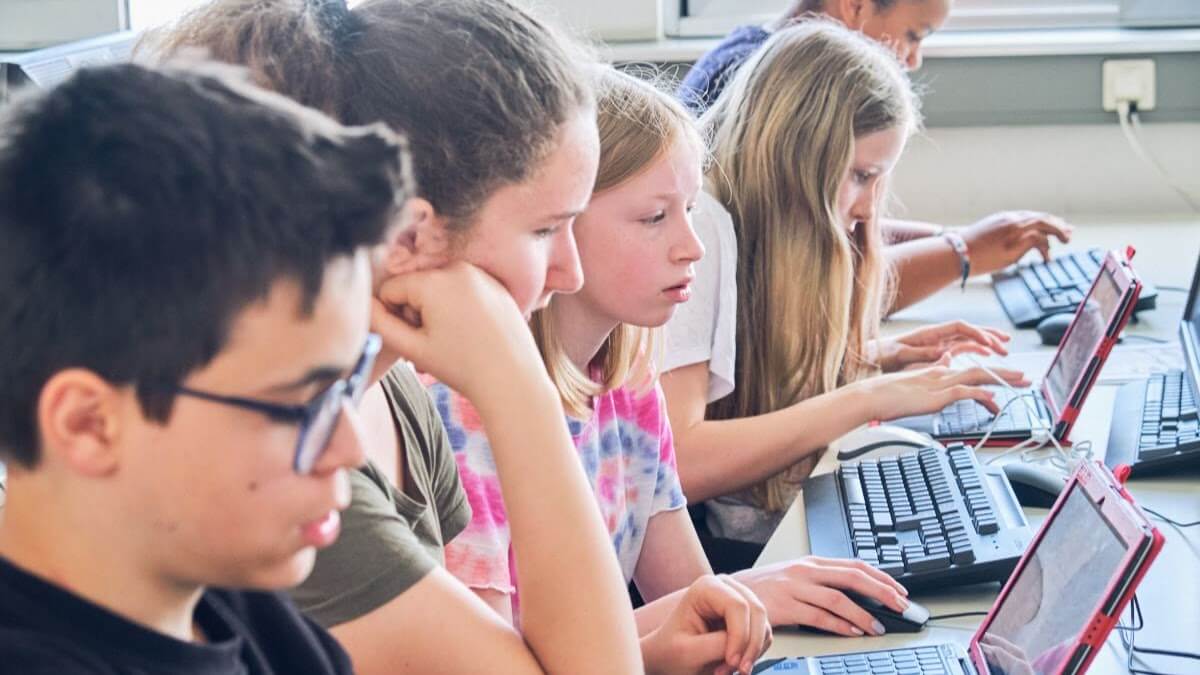Good Days, Bad Days: “Upstrive” Captures Mental Health
Over 40,000 Students Are Already Using “Upstrive” – The App for Mental Health. We spoke with founder Sven Maikranz about why an app is needed for mental health and how it can help teachers and parents recognize psychological stress early on.
Where does the name “Upstrive” come from, and how did the company come to be?
For over 20 years, I’ve had a passion for understanding why we act the way we do and how we can sustainably influence our thinking and feelings. After my corporate career, I met my co-founder Linda during one of my coaching training sessions, and that’s when the idea for Upstrive was born. With Upstrive, we want to help children and young people feel better in the long term and experience unpleasant emotions less frequently or in a more controlled way.
Naming the app was a long process because we wanted a name that expressed both development and self-efficacy.
How do children and teenagers use the app – do they accept it when directed by parents or teachers?
Children and teenagers – actually, all of us – have the need to be seen and heard. However, it’s often difficult to open up to someone. With our app, that step becomes easier. Children and young people can independently explore solution- and growth-oriented content. There are two separate versions: Upstrive Family for home and Upstrive Education for school.

Do parents often not notice when their child is under stress?
This is where we want to help! Upstrive is not meant to be used only when psychological stress is already present. The app is designed as a companion for everyday life, for both good and bad days. We want to help parents and children recognize when they are doing well and what they can do to have more good days.
A typical characteristic of many psychological stresses is that they are hard to see from the outside. Upstrive lowers the barriers to recognizing and sharing uncomfortable feelings. This way, parents and teachers can detect early who needs support and identify students who previously seemed fine but are struggling. Some schools have already told us that students who had been unnoticed, even ones who didn’t want to live anymore, were flagged through Upstrive. They had no idea these students were in distress.
How is the app used in the school environment – is there a best-case scenario?
Recently, a young teacher put it succinctly: Before class, he takes two minutes to check the app. In an instant, he can see how his class is doing. Did they have a good weekend? Are they stressed? Just knowing this helps him engage with them better. On some days, he can have a brief conversation before class to give space to his students’ feelings. That’s our best-case scenario.
Let’s say a 14-year-old student is being bullied by her peers, and a teacher notices. How can the app help, or isn’t it enough to have a personal conversation with the girl?
First of all, Upstrive can help identify the student’s struggles. Bullying isn’t always obvious, especially with social media. Asking for help can be difficult here too, and we see that students in our app share their emotions much earlier and more easily than they would, for example, by approaching a trusted teacher.
A personal conversation is still very important. We don’t want Upstrive to replace personal contact but to enhance it by providing teachers with valuable information, helping them intervene more effectively.
The app works with AI – what’s the difference between ChatGPT? Let’s assume the bullied student enters her problems into the app – wouldn’t she also get advice here?
ChatGPT can be a great advisor. You ask a question, and you get a list of possible solutions right away. These can indeed be very helpful. The question is, what have you learned from it? Our AI coach is trained to help users find their own way to confidently face their challenges through targeted questions. There are no one-time solutions; on the contrary – we want to build long-term skills that strengthen mental health in everyday life. That’s why the coach responds to users’ personal answers and needs.
You define the app as a “Wellbeing” tool – what do you mean by this term?
“Wellbeing” for us means psychological, emotional, and social well-being, which is individually shaped. It’s not about constant euphoria but about recognizing fluctuations and, if necessary, counteracting them. Upstrive focuses on prevention and skill development, not therapy. The goal is to help users develop a positive and solution-oriented attitude and actively promote their well-being – in their own way.
More articles
The following articles might also interest you.

EdTech Austria Fellowship
24. October 2024

Lifelong Learning in Transition: Opportunities and Challenges of AI
17. January 2025

Motor and digital: Cubilog reimagines language development
16. December 2024

“Healthy Apprentice”: Health Literacy for Vocational Schools
28. November 2024

Tailor-made for the creators of tomorrow: The TalentsLounge
4. October 2024
